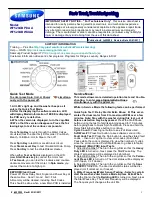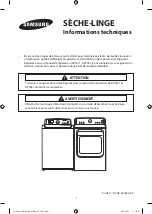
72
MNV3960
EN
If the rinse aid indicator is displayed during the program, rinse aid shall be added before the next washing!
The volume of rinse aid can be checked visually, too. If the window by the closing of the rinse aid container is
black, there is enough of the agent. If the window is light, the container is empty.
Setting the Rinse Aid Dosage
There are several positions for dosage of the rinse aid. Before the first use, set the dosage at 2.
If there are water stains on the dishes, add some rinse aid.
If a sticky film remains, reduce the volume of the rinse aid.
1. Open the door.
2. Open the container closing (Fig. 4).
3. Increase/reduce the dosage.
4. Close the container and fasten the closing gently (Fig. 6).
If you use only dishwasher detergent integrated with rinse aid, leave the rinse aid container empty, or reduce
the dosage to the minimum.
Using the Dishwasher Detergent
Dishwasher detergents can be divided by form into four groups:
a) Powdered
b) Liquid
c) Tablets
d) Combined (e.g. 3 in 1 tablets)
They can be divided into two groups by chemical composition:
a) Alkaline
b) With natural enzymes
We can further divide them into:
a) Phosphate and chlorine
b) Phosphate and chlorine-free
c) Phosphate-free and chlorine-free
When using phosphate-free agents in hard water, white sediment may appear on the dishes and internal walls. This can
be prevented by higher amounts of dishwasher detergent.
Chlorine-free dishwasher detergents have less bleaching effect. This may lead to a higher visibility of tea stains or
Fig. 4
Fig. 5
Fig. 6
















































